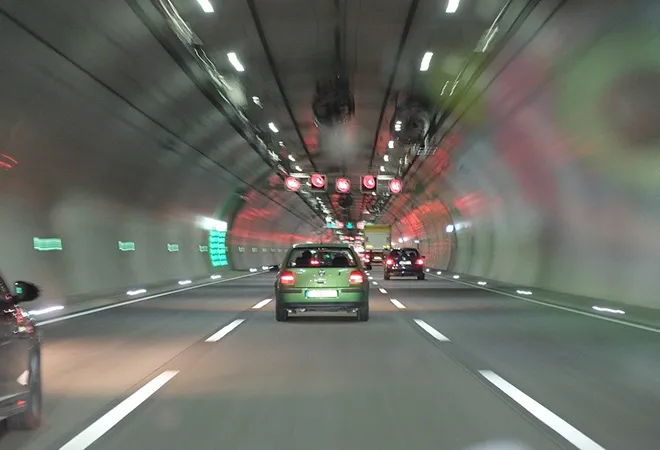
This article is part of the series — Tech in the New Decade.
If you were shocked by the global trade collapse at the onset of COVID-19, you would be pleasantly surprised to hear that the world’s trade flows are back to their pre-pandemic level. The trade collapse is like the all-too-familiar traffic jam, just in the global supply chain. It happens every so often, but it always passes. The collapse means not the end of globalisation, but the need for even more of it.
There is no question that the fall in trade in the spring, triggered by lockdowns and protectionist measures around the globe, was sudden and deep. In April 2020, the World Trade Organisation warned that global trade would drop by up to a third of its pre-pandemic value. The expected impact, amplified by the increasingly intertwined global supply chain, was disproportionally larger than the fall in the global economy. Some critics even pronounced globalisation dead. So much for the liberal internationalism, they said.
The expected impact, amplified by the increasingly intertwined global supply chain, was disproportionally larger than the fall in the global economy.
The gloomy prediction seemed to be standing, but only for a few months. According to the World Trade Monitor compiled by the CPB Netherlands Bureau for Economic Policy Analysis, cross-border flows of goods in August 2020 have already snapped back to the level seen in March. As coronavirus vaccines become available, the trade rebound is unlikely to be reversed.
The spectacular comeback of international trade is relatable for anyone who has driven on a highway. Traffic suddenly slows to a crawl or even a standstill. Moments later, you begin to move again and get back to full speed, only to wonder why there is no accident, lane closure, or any other apparent cause. This puzzle is what scientists call a “phantom traffic jam.”
In 2008, a group of Japanese researchers demonstrated in a controlled experiment that the real cause of phantom traffic jams is the drivers themselves. When a single driver on a dense highway slows down for some reason, the vehicles behind also must slow down — for their own safety. Some drivers may break unnecessarily hard, triggering even more abrupt breaks behind them. Even if the road conditions are perfectly fine, the domino effect could send a shock wave of congestion miles backwards before the leading vehicles can move again.
As coronavirus vaccines become available, the trade rebound is unlikely to be reversed.
Goods move through the global supply chain just like vehicles running on a highway: A smooth system requires all parts to move smoothly. Every iPhone, for example, contains parts from suppliers in 43 countries across six continents. And just like phantom traffic jams, phantom trade collapses are bound to happen every now and then. The pandemic just gave it a perfect excuse.
It is easy to criticise crisis-era measures, such as export controls and travel bans, as nationalism and protectionism. The fact that those illiberal currents do exist in many countries does not help either. However, who can really blame a driver for braking when the cars ahead suddenly slow down? When a country imposes export restrictions on hand sanitisers, it could be an unwarranted fear, but it could also be driven by a justified uncertainty over whether the needed ingredients, such as ethanol and isopropyl alcohol, are available at home or abroad. The United States, the world’s largest ethanol producer, still had a hand sanitiser shortage due to regulations that forbade its use as rubbing alcohol. Once the uncertainty is alleviated, the traffic of goods begins to flow again.
Companies have now realised that they need a better understanding of their own supply chains and a more diverse set of suppliers across different regions, rather than from a single source, such as China.
The lessons learned from the pandemic trade collapse also point to more, not less, globalisation in the future. Companies have now realised that they need a better understanding of their own supply chains and a more diverse set of suppliers across different regions, rather than from a single source, such as China. That is no different from saying that alleviating future phantom traffic jams requires more highways, better highways, and more vigilant driving. One would be misguided to conclude from the existence of traffic that highways are a bad idea.
Just like traffics on highways, occasional, phantom trade collapses are a feature of globalisation, not a bug. Global trade after COVID-19 will never be the same. But the pandemic is far from an obituary of liberal internationalism. Instead, it is a reminder that we need to get better at it, and all signs suggest that we are.
The views expressed above belong to the author(s). ORF research and analyses now available on Telegram! Click here to access our curated content — blogs, longforms and interviews.




 PREV
PREV

